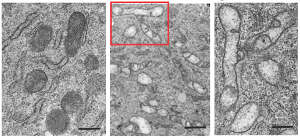Using AI to control energy for indoor agriculture
30 September 2024
Published online 18 February 2020
Findings help elucidate the molecular mechanisms that cause dental fluorosis.

F. J. Aulestia et al., Science Signaling (2020)
Enlarge image
Now, researchers report1 a probable link between fluoride exposure and disrupted calcium signalling and homeostasis in tooth enamel cells. Their findings provide a new model for understanding the molecular basis of dental fluorosis.
“Our study focused on mimicking conditions of exposing dental enamel cells to excessive fluoride concentration. It found that this decreases calcium levels within cells and affects the cell’s energy providers, the mitochondria,” says Rodrigo Lacruz of New York University (NYU) College of Dentistry.
Lacruz and his team, including colleagues at NYU Abu Dhabi, investigated the effects of fluoride on enamel-forming cells isolated from rats (primary enamel cells), a mouse-derived enamel cell line known as LS8 (chosen for its relative ease of handling in the lab compared with primary enamel cells), and human embryonic kidney (HEK)-293 cells. The cells were exposed to levels of fluoride similar to those consumed by humans who regularly drink highly fluoridated water. Lower calcium levels were observed in enamel cells, but not in HEK-293 cells, suggesting that not all cell types respond to fluoride in the same way.
Through RNA sequencing analysis of fluoride-treated LS8 cells, the team identified changes in gene expression that flagged up stress in the endoplasmic reticulum, a major site of calcium storage and release. In contrast, no such stress was observed in fluoride-treated HEK-293 cells. Further tests showed clear evidence of disruption to mitochondrial activity in fluoride-treated enamel cells.
The US Public Health Service’s current recommendation2 for fluoride concentration in drinking water for the prevention of tooth decay is 0.7 parts per million. “The ingestion of fluoride at the recommended levels by health organizations is safe and has positive effects,” says Lacruz.
doi:10.1038/nmiddleeast.2020.27
Stay connected: